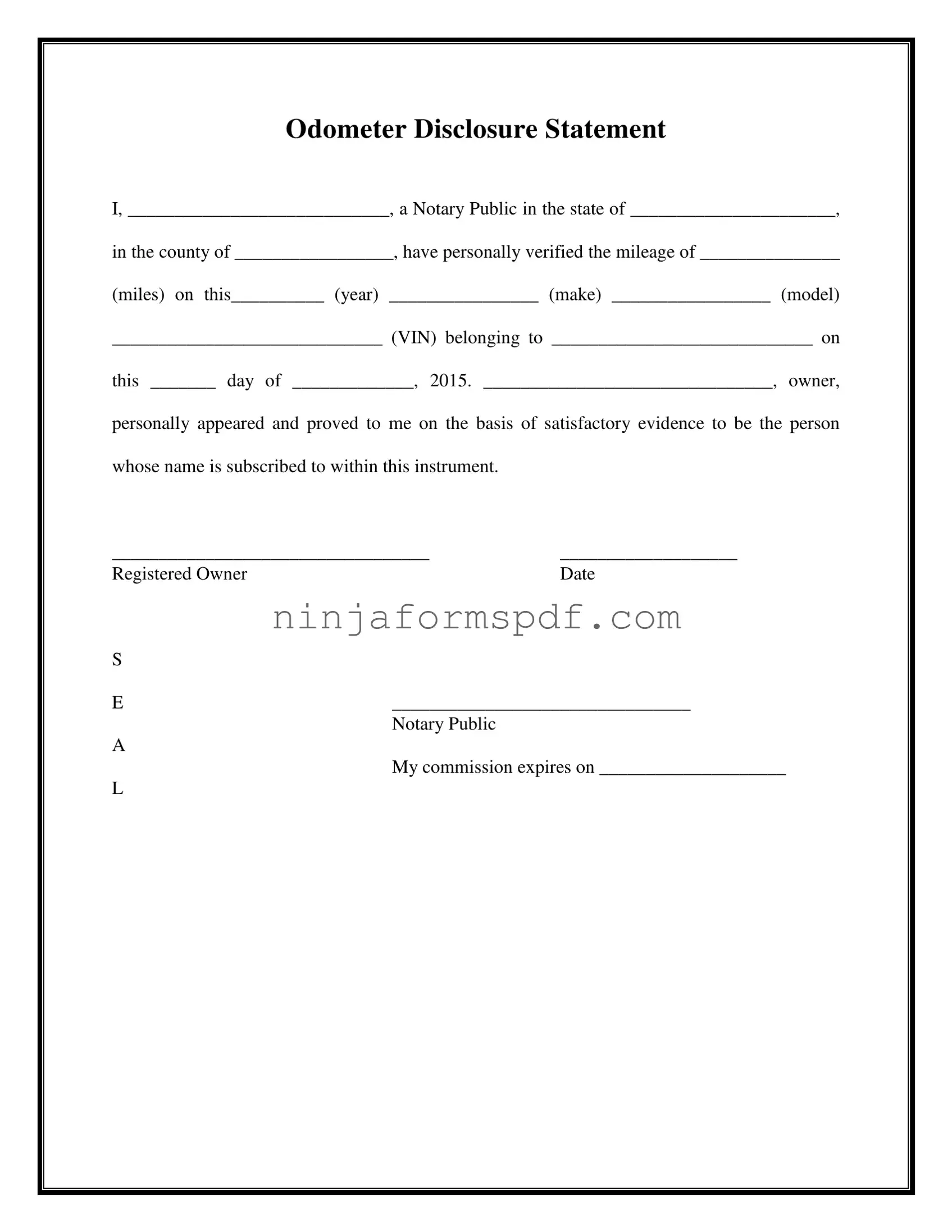What is a Notarized Odometer Statement?
An odometer statement that has been officially certified by a notary public. This document serves as a formal declaration of a vehicle's mileage at a specific point in time, as attested by the vehicle's owner and verified by the notary.
Why is it necessary to notarize an Odometer Statement?
Notarization adds a layer of verification and legal formality, ensuring that the information provided is accurate and that the individual signing the statement is indeed the vehicle's owner. This helps prevent fraud and disputes over the vehicle's mileage.
Who can notarize an Odometer Statement?
Any licensed Notary Public within the state where the notarization is taking place can notarize an odometer statement. The notary must operate within the county where the verification occurs.
What information is required on a Notarized Odometer Statement?
The statement must include the vehicle's make, model, year, VIN (Vehicle Identification Number), current mileage, and the date of the statement. Additionally, the vehicle owner's name and signature, along with the Notary Public's seal and signature, are required.
Is there a specific time when an Odometer Statement needs to be notarized?
It's typically required when a vehicle is being sold or transferred to a new owner. This ensures that the new owner has accurate information about the vehicle's mileage.
Can an Odometer Statement be notarized in a different state from where the vehicle is registered?
Yes, an odometer statement can be notarized in a different state, but it's essential that the Notary Public is licensed in the state where the notarization takes place. The statement is still valid as long as it meets the legal requirements of the state where the vehicle is registered.
What happens if the mileage is incorrect on a Notarized Odometer Statement?
If the mileage is later found to be incorrect, it can lead to legal issues for the seller, including accusations of fraud. It's vital that the mileage is accurately reported and verified at the time of notarization.
How long is a Notarized Odometer Statement valid?
There's no expiration date for the statement itself; however, it represents the vehicle's mileage at the time of notarization only. For transactions, it's best to have the statement as close to the transfer or sale date as possible.
What should be done if there are errors in the Notarized Odometer Statement?
If errors are discovered before the document has been used for legal purposes, you should have the statement corrected and re-notarized. If the document has already been utilized, it might be necessary to consult with legal counsel on how to rectify the situation.

